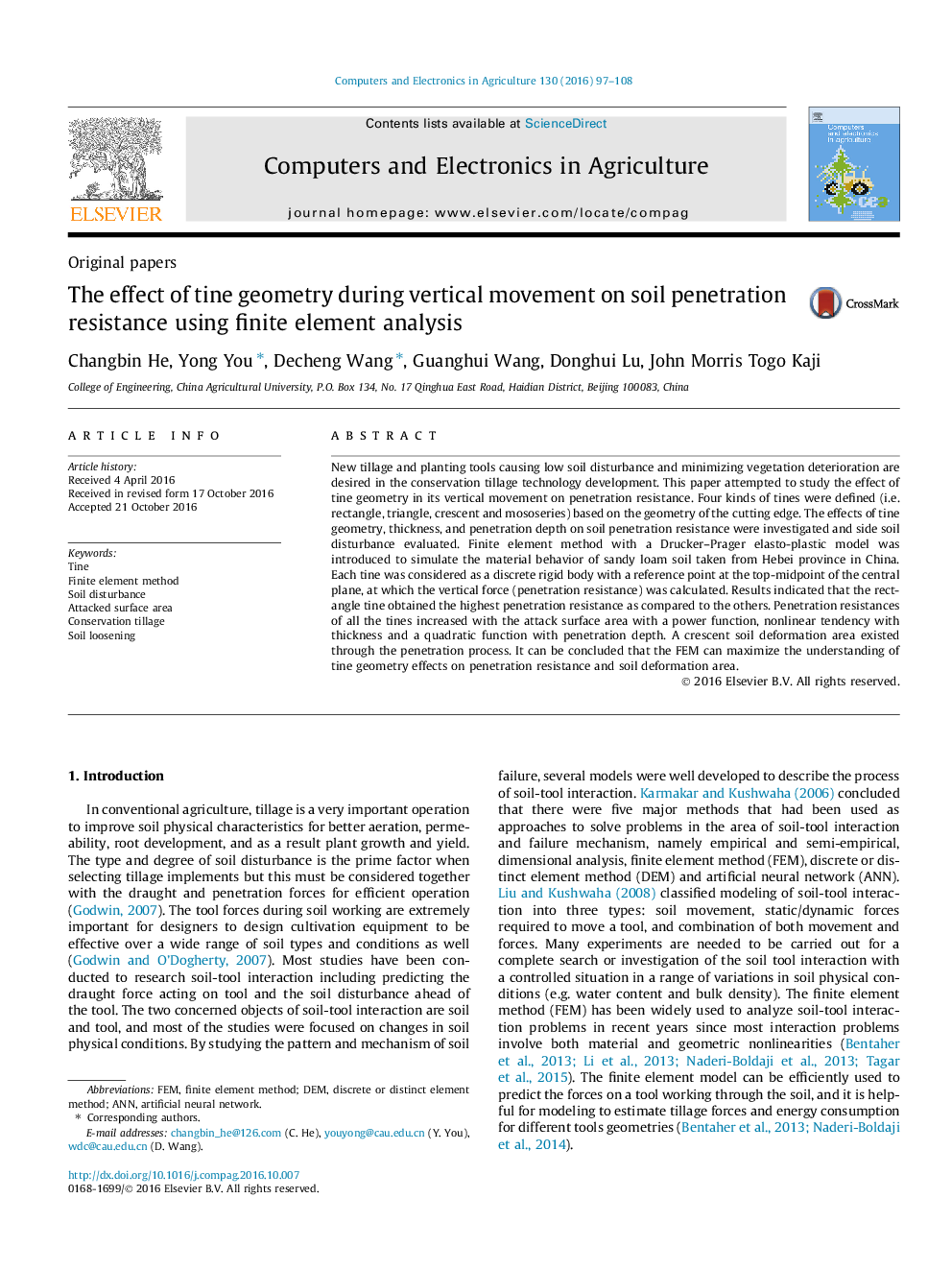| Article ID | Journal | Published Year | Pages | File Type |
|---|---|---|---|---|
| 4759191 | Computers and Electronics in Agriculture | 2016 | 12 Pages |
Abstract
New tillage and planting tools causing low soil disturbance and minimizing vegetation deterioration are desired in the conservation tillage technology development. This paper attempted to study the effect of tine geometry in its vertical movement on penetration resistance. Four kinds of tines were defined (i.e. rectangle, triangle, crescent and mososeries) based on the geometry of the cutting edge. The effects of tine geometry, thickness, and penetration depth on soil penetration resistance were investigated and side soil disturbance evaluated. Finite element method with a Drucker-Prager elasto-plastic model was introduced to simulate the material behavior of sandy loam soil taken from Hebei province in China. Each tine was considered as a discrete rigid body with a reference point at the top-midpoint of the central plane, at which the vertical force (penetration resistance) was calculated. Results indicated that the rectangle tine obtained the highest penetration resistance as compared to the others. Penetration resistances of all the tines increased with the attack surface area with a power function, nonlinear tendency with thickness and a quadratic function with penetration depth. A crescent soil deformation area existed through the penetration process. It can be concluded that the FEM can maximize the understanding of tine geometry effects on penetration resistance and soil deformation area.
Keywords
Related Topics
Physical Sciences and Engineering
Computer Science
Computer Science Applications
Authors
Changbin He, Yong You, Decheng Wang, Guanghui Wang, Donghui Lu, John Morris Togo Kaji,
